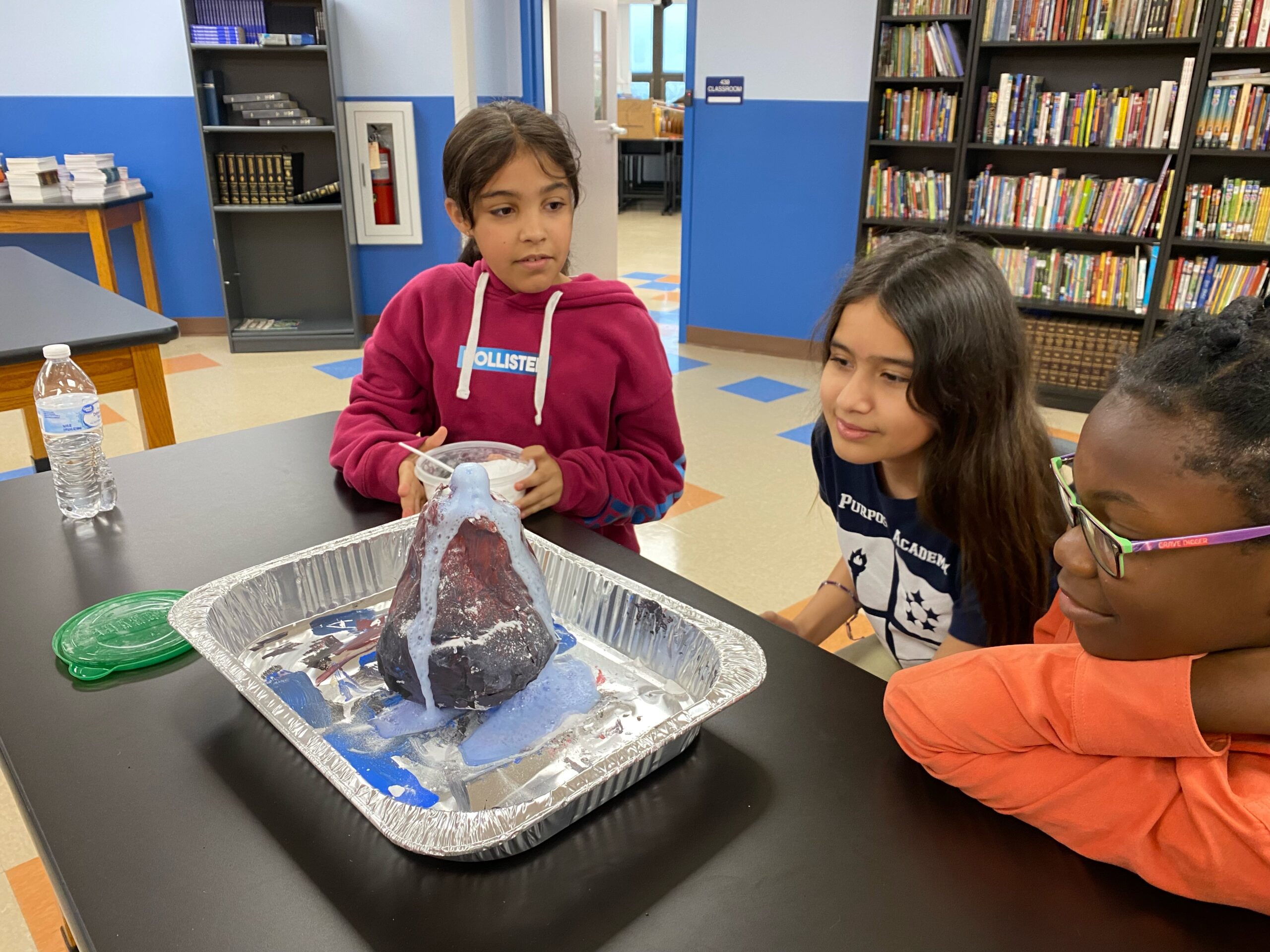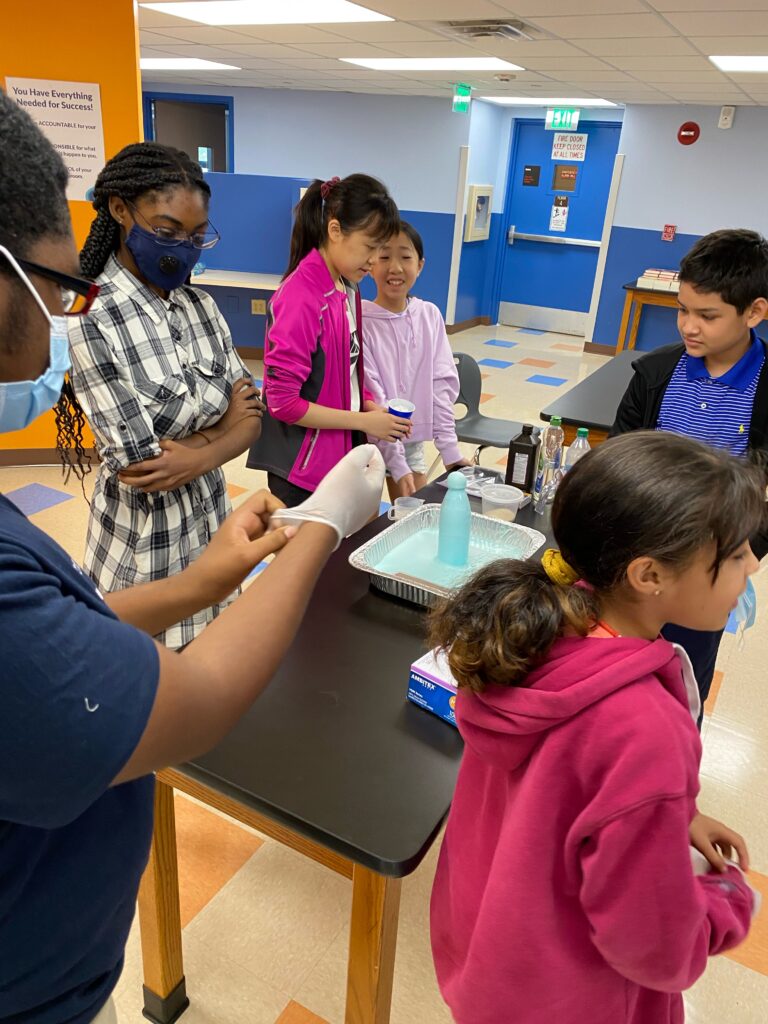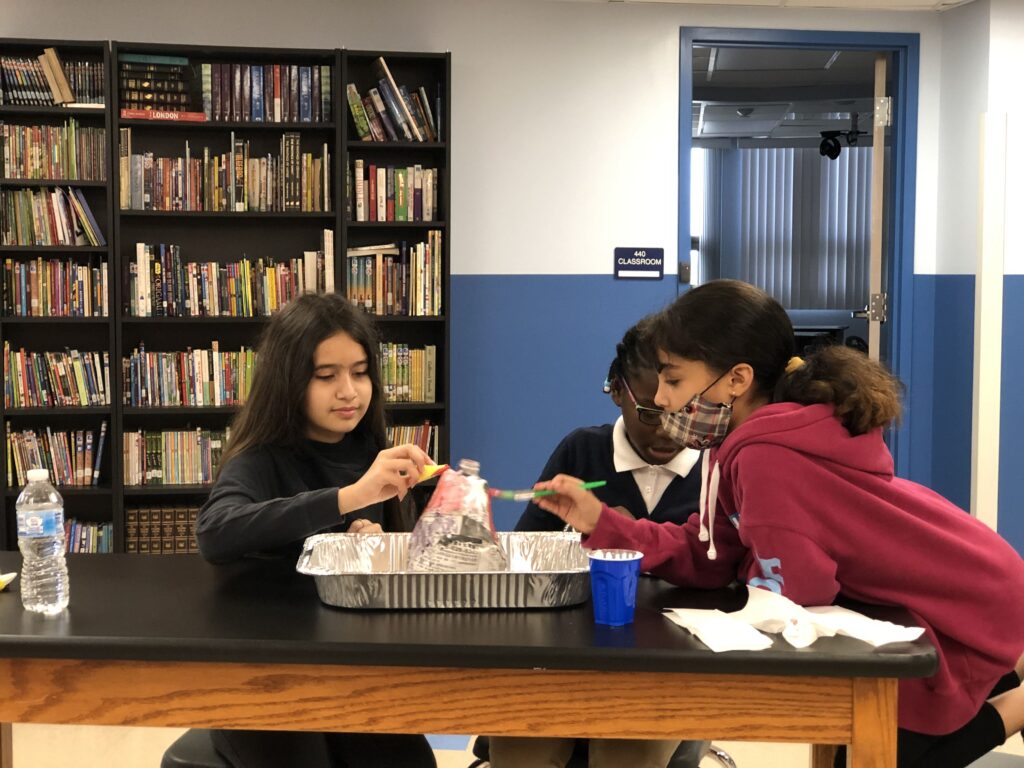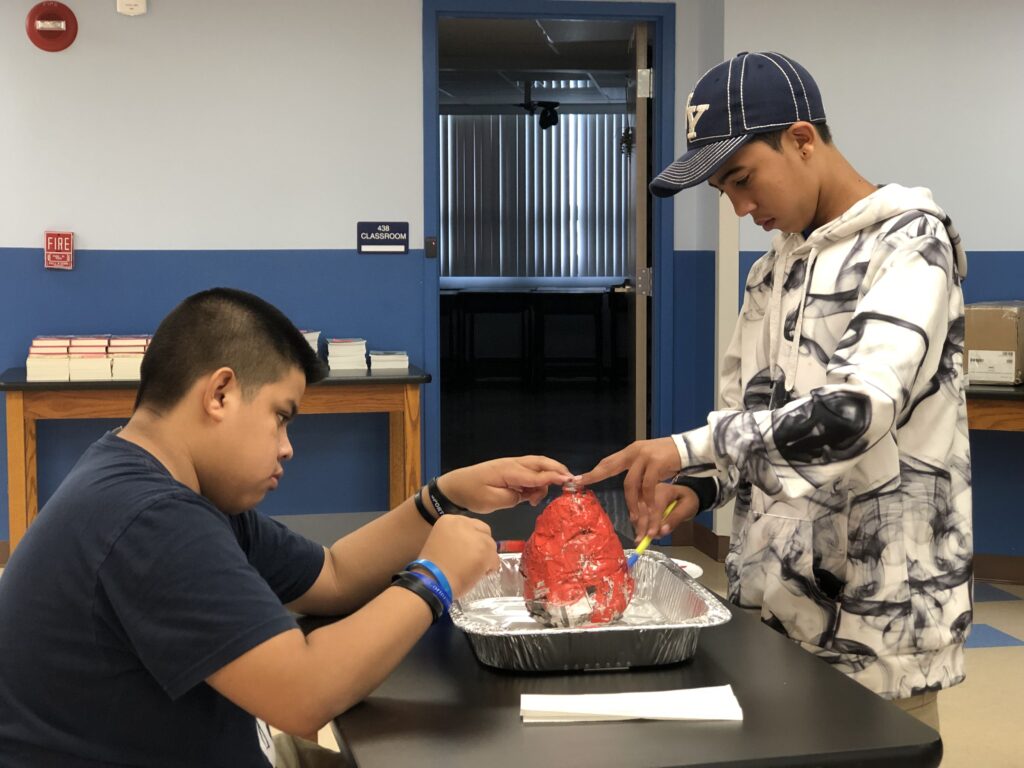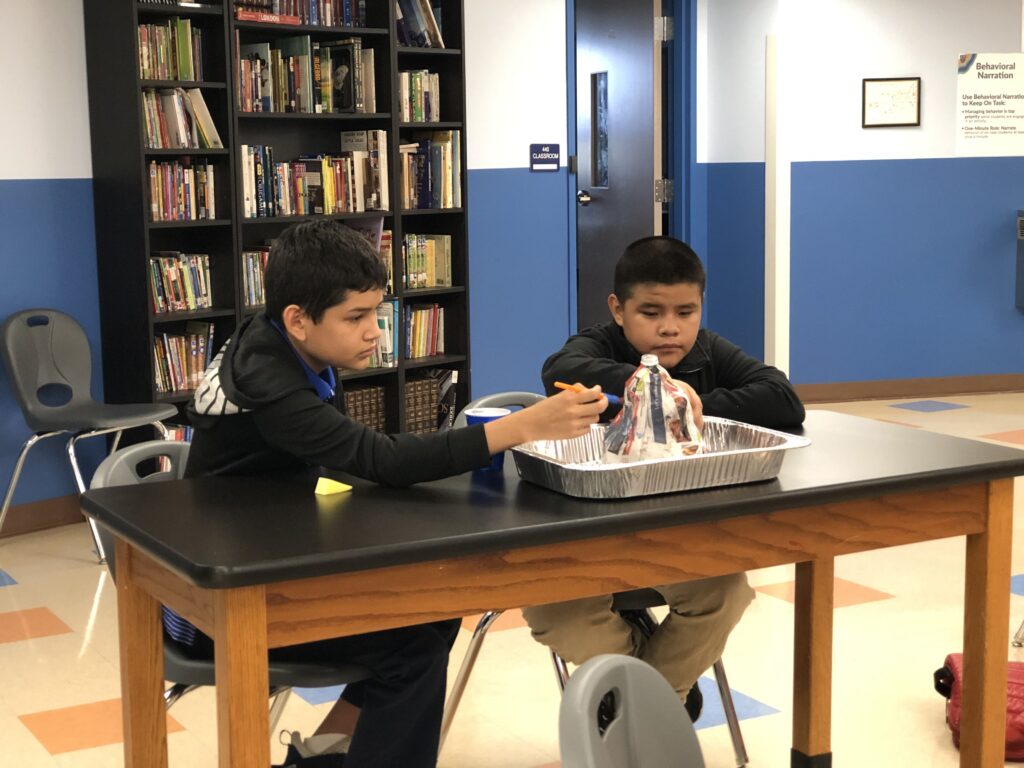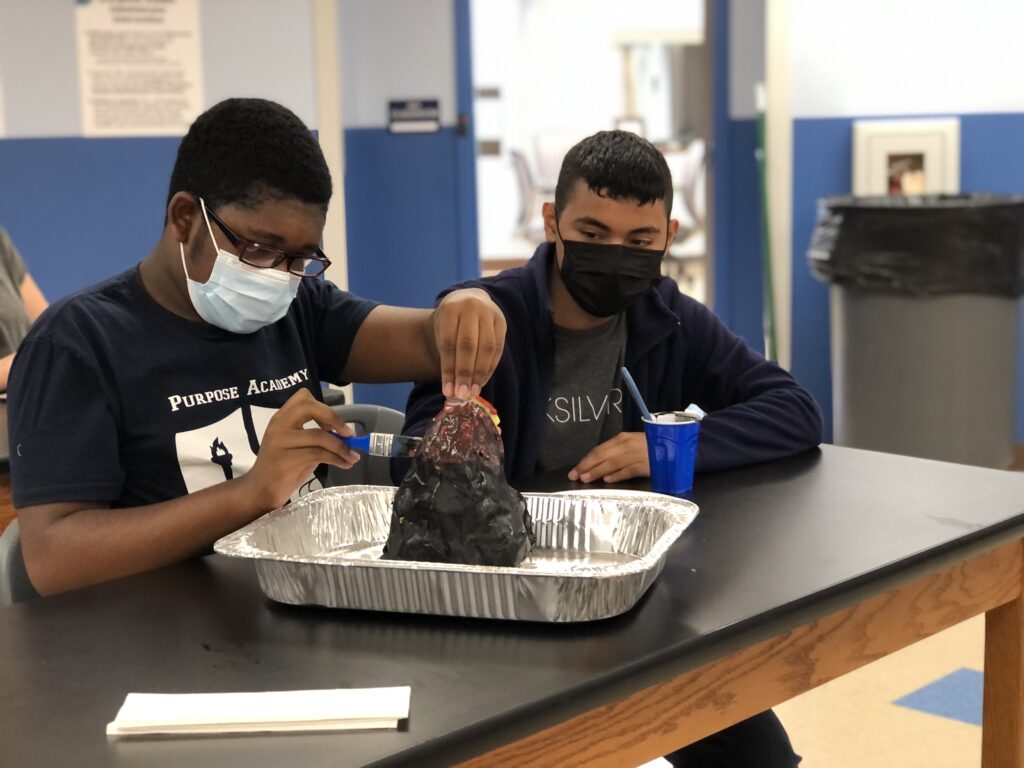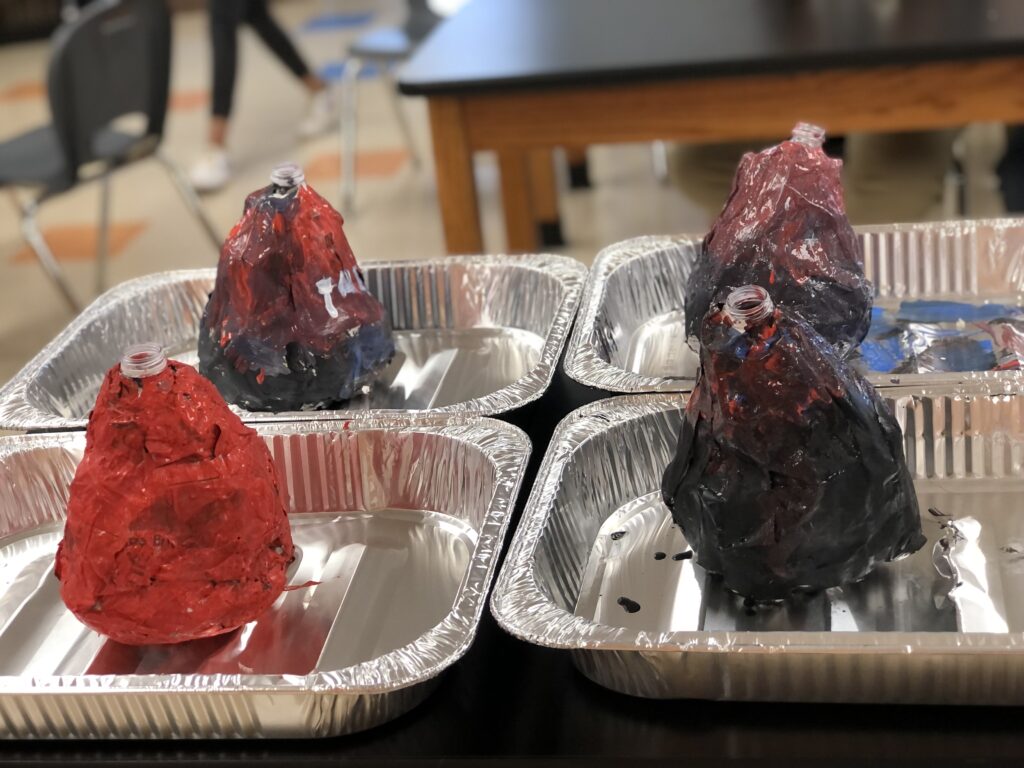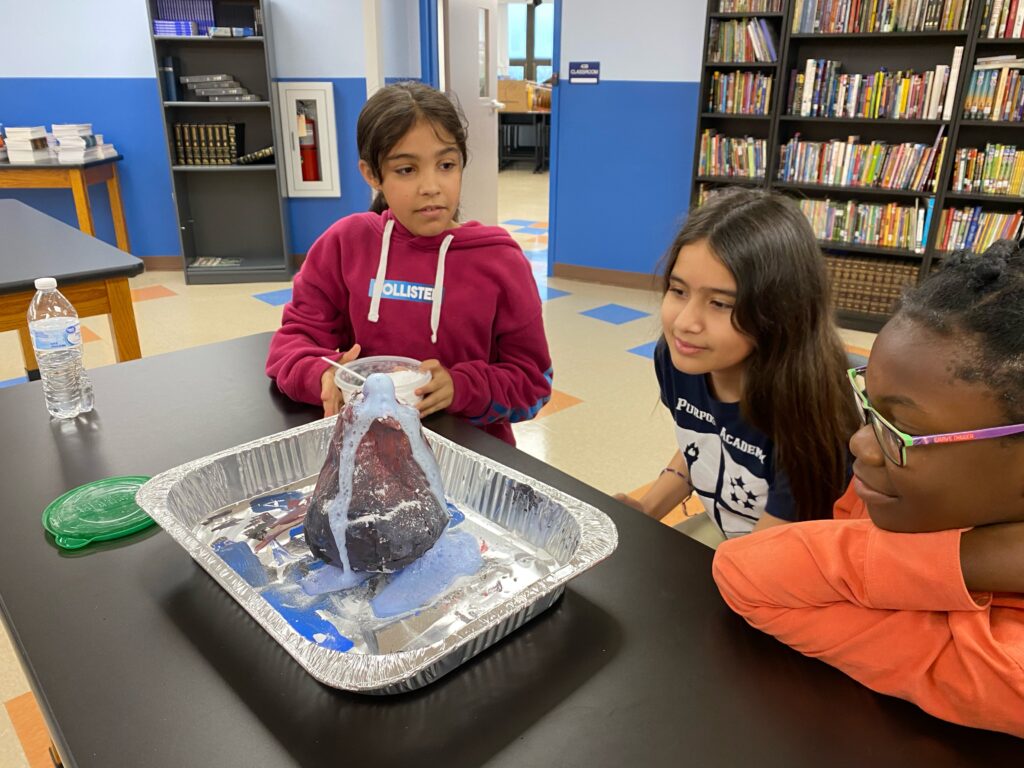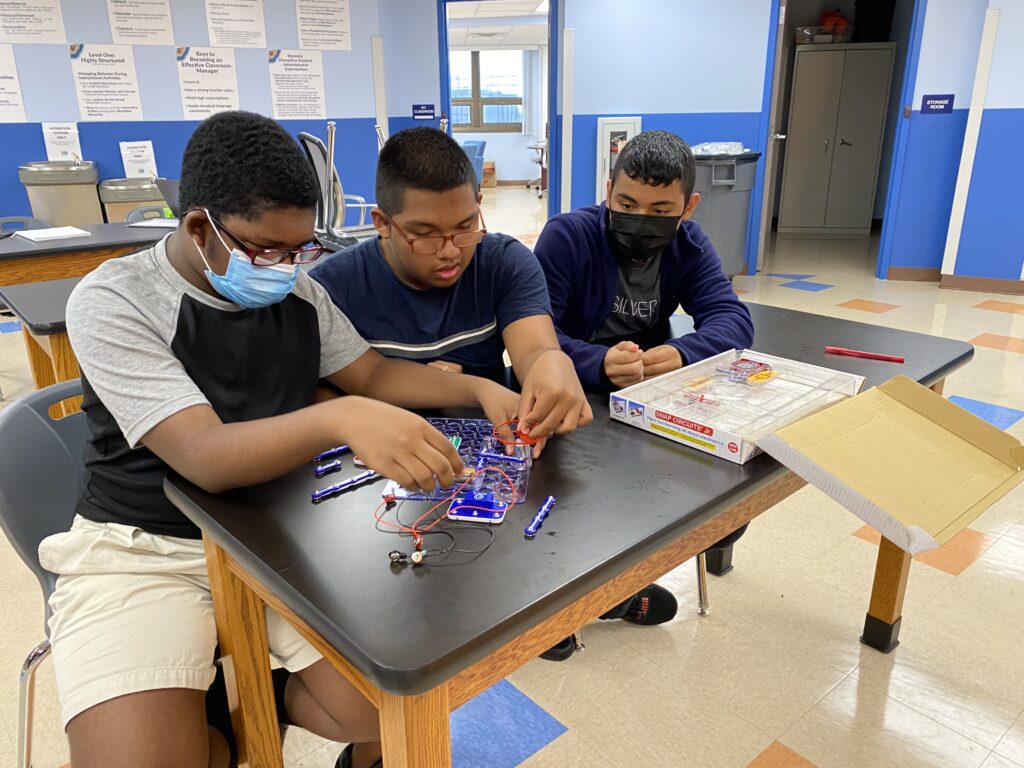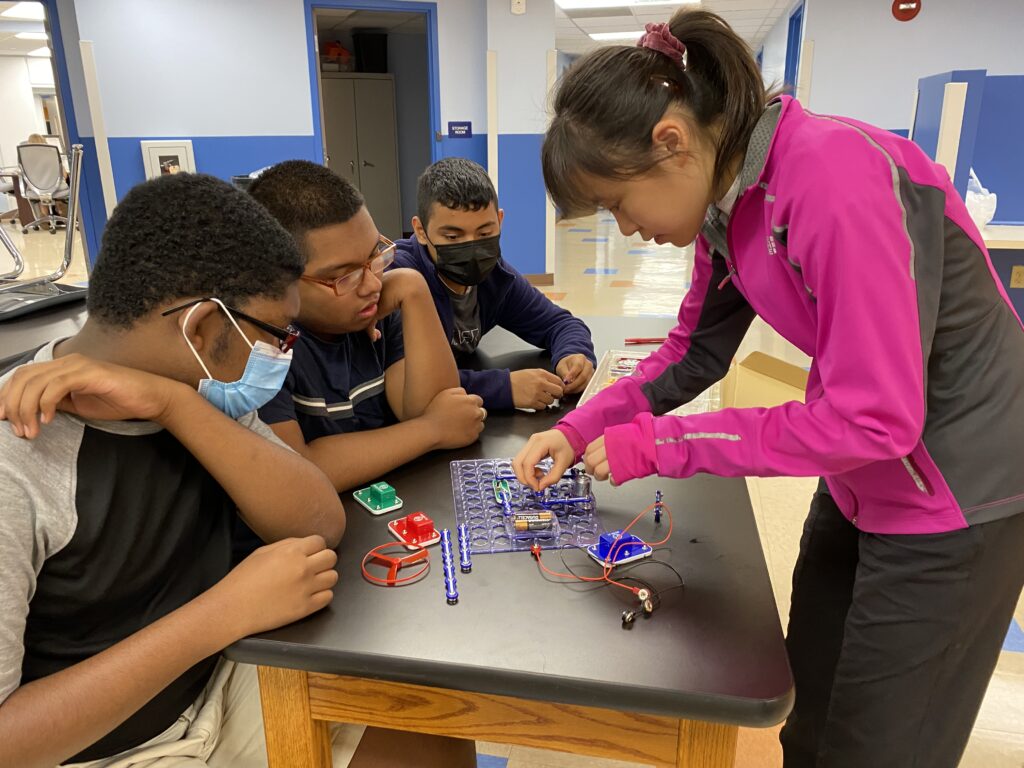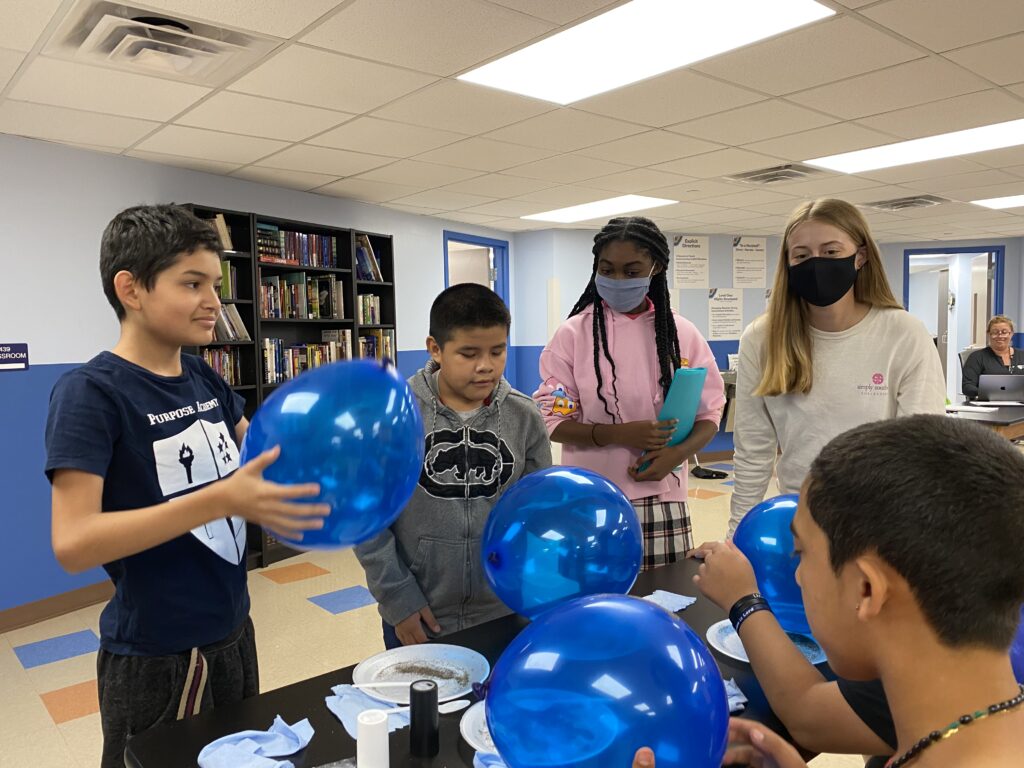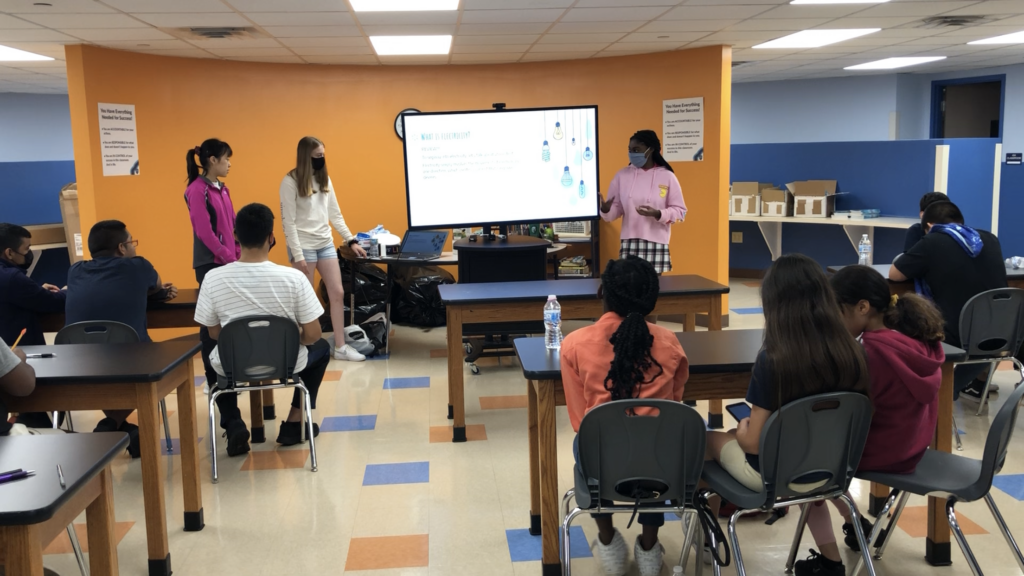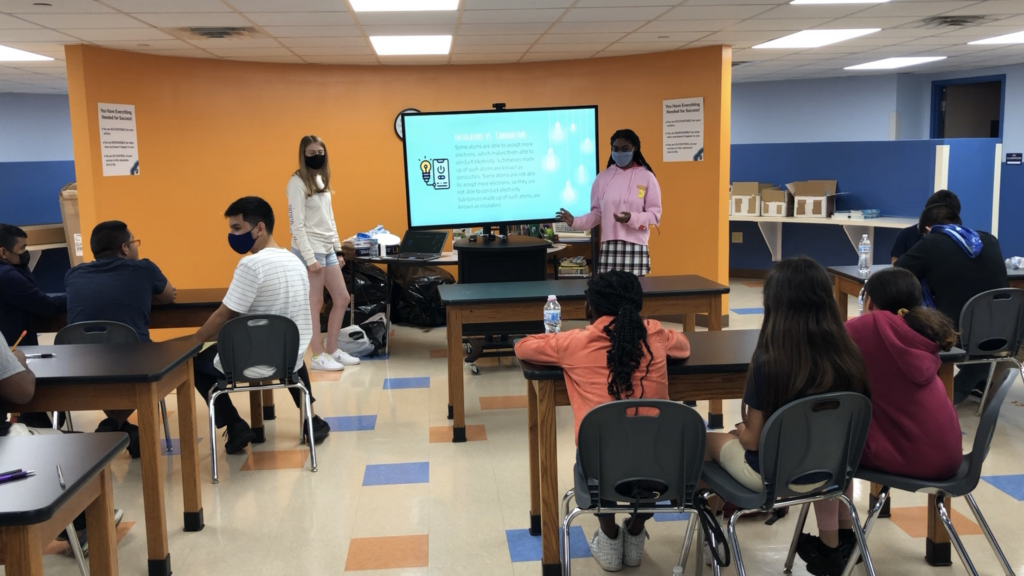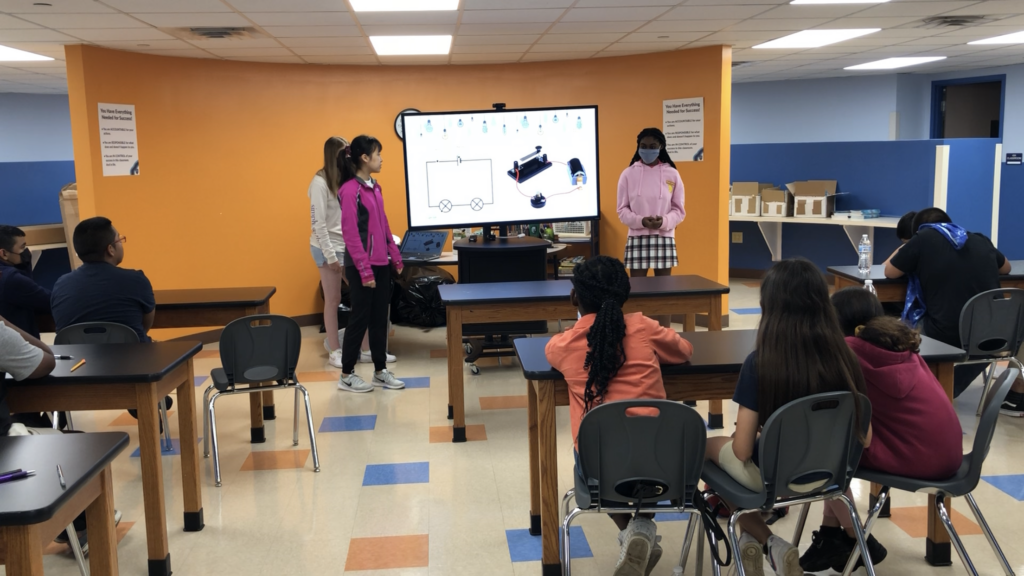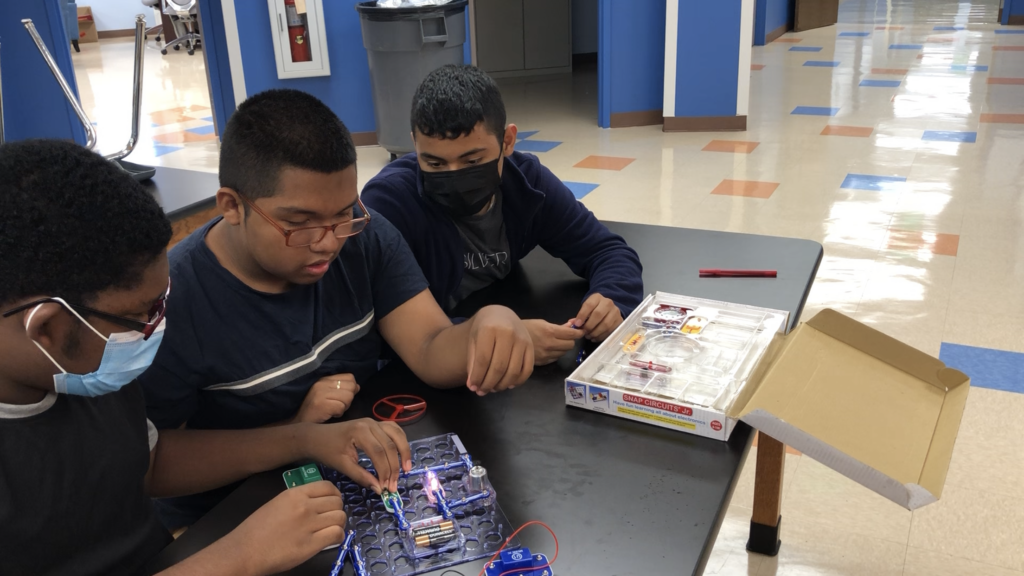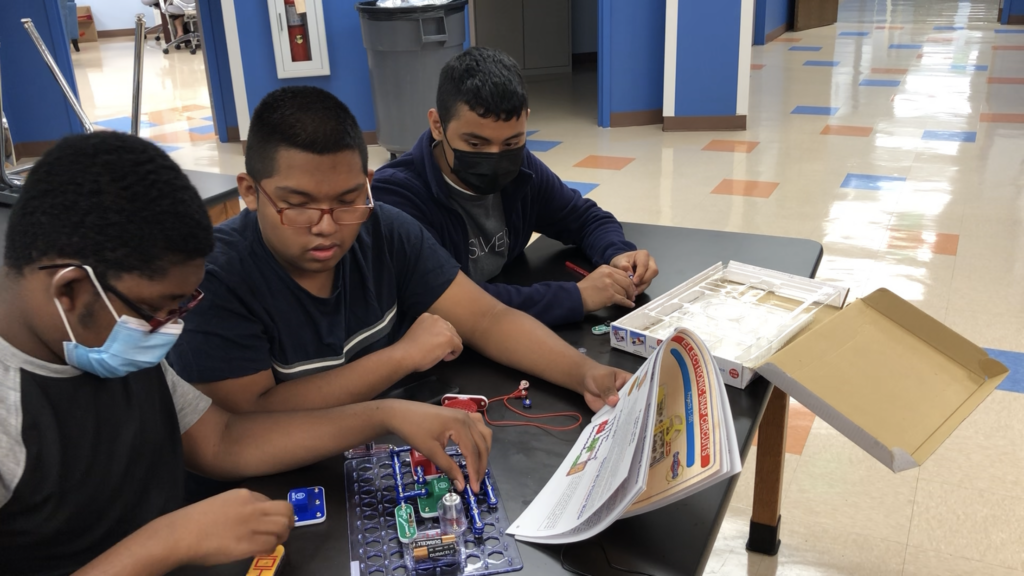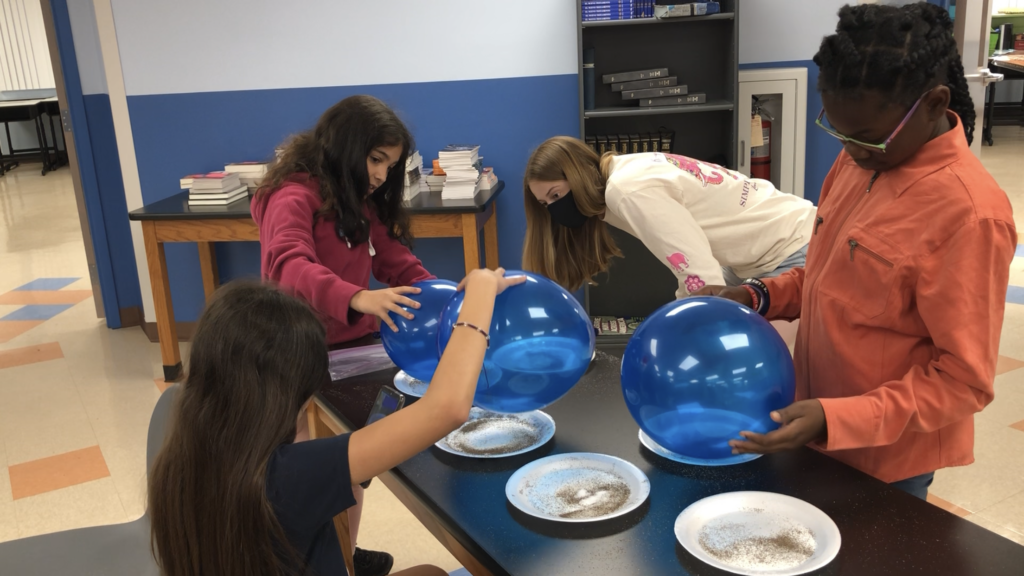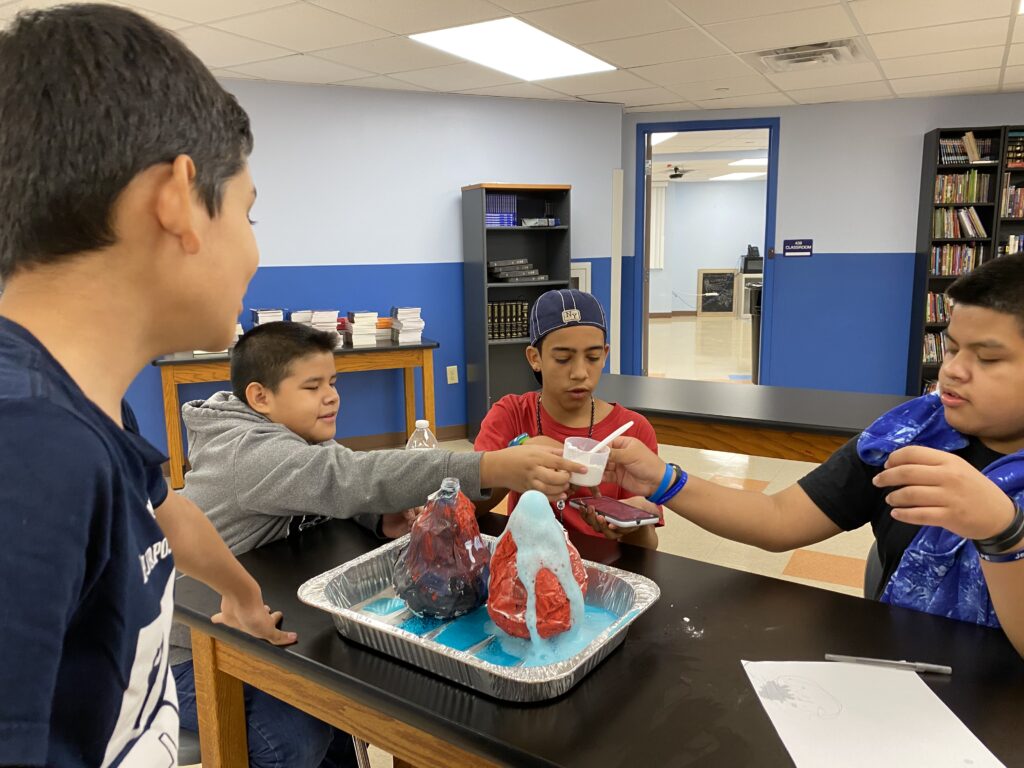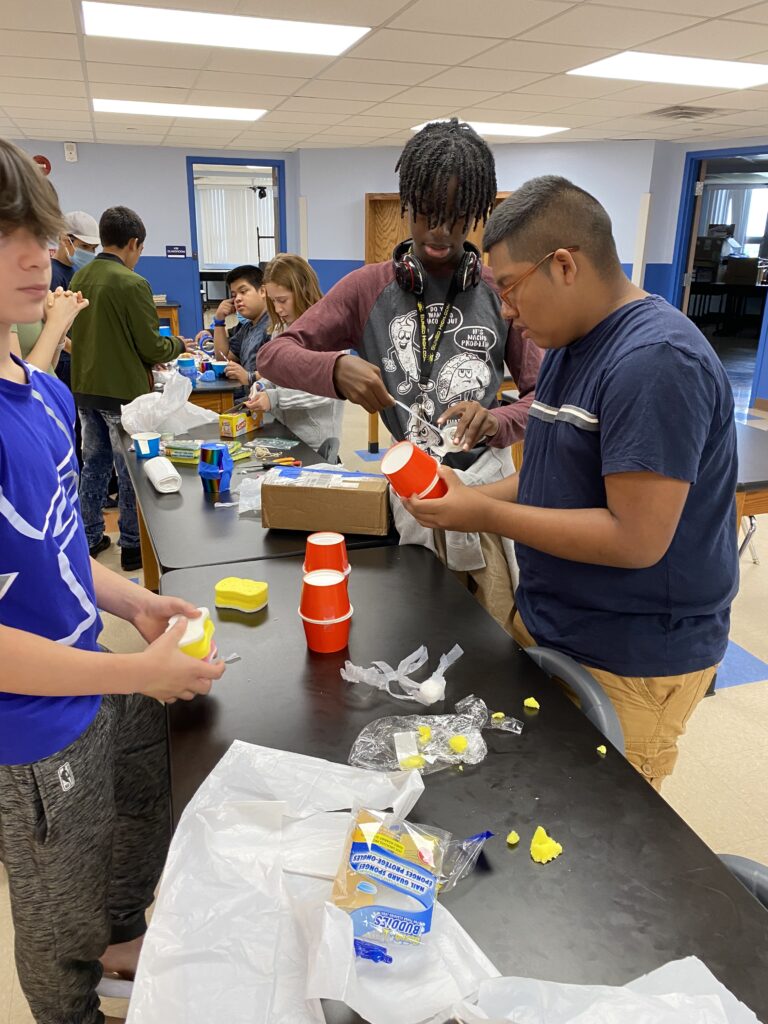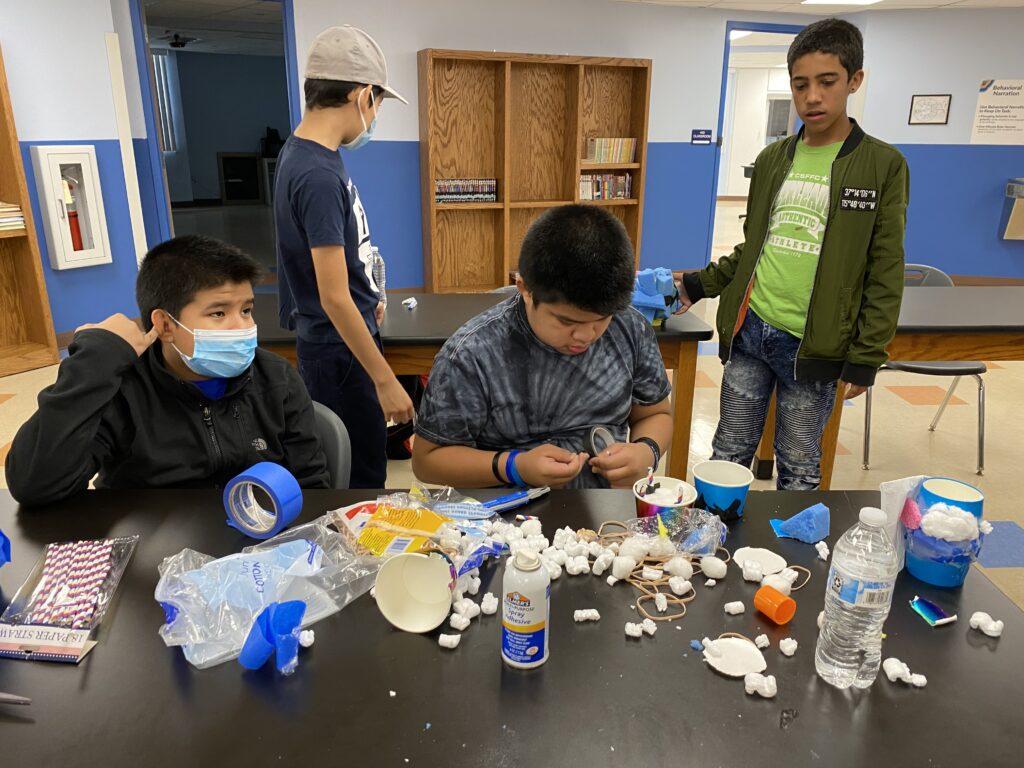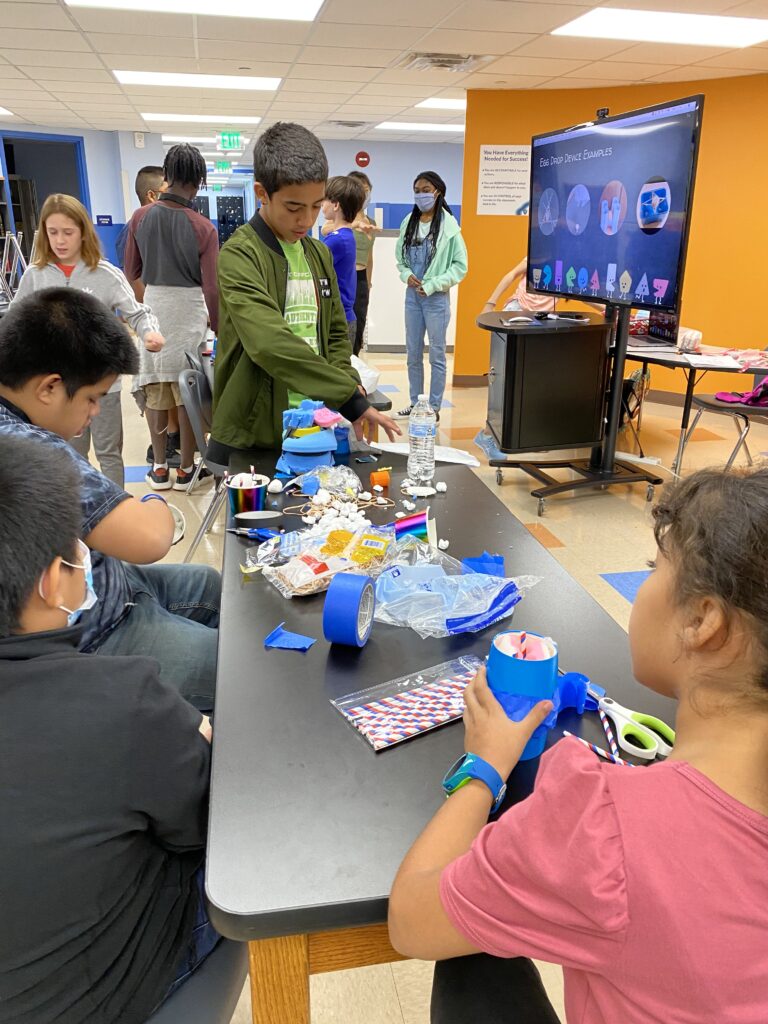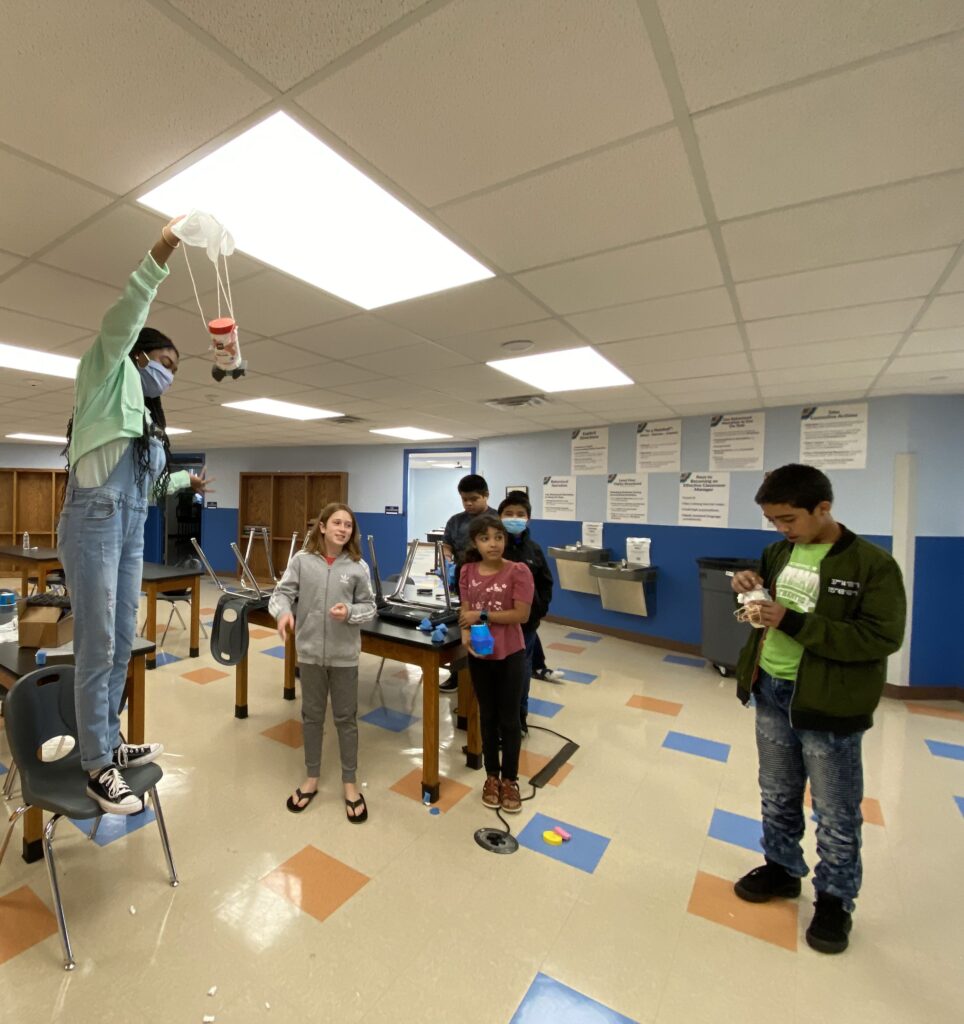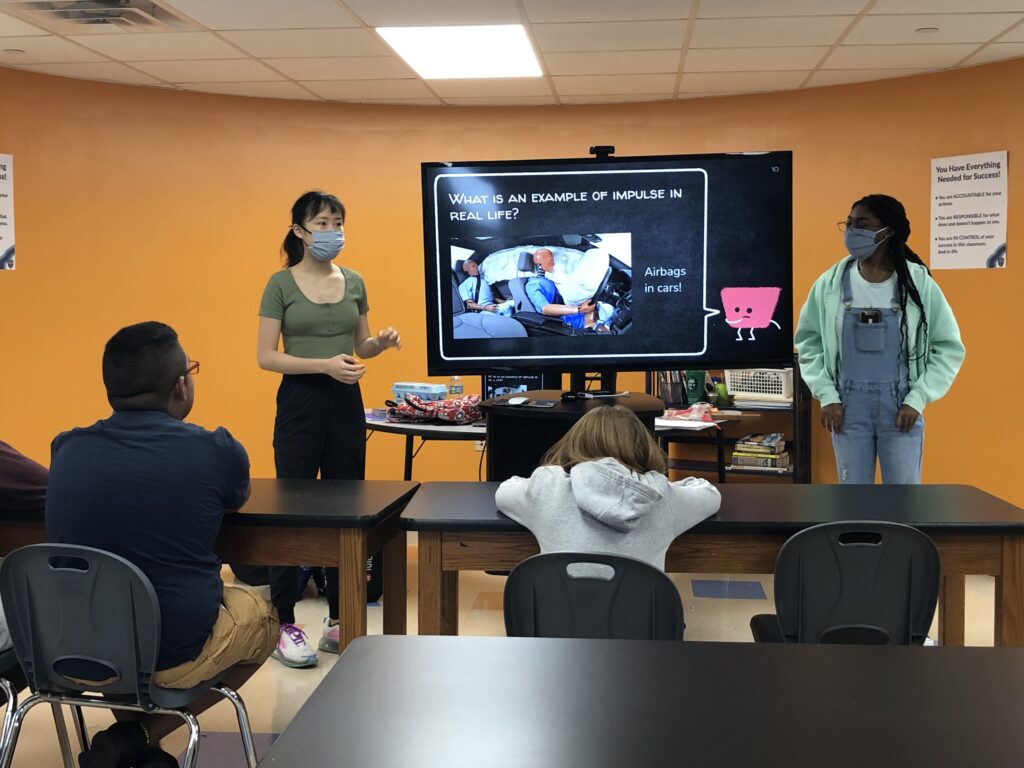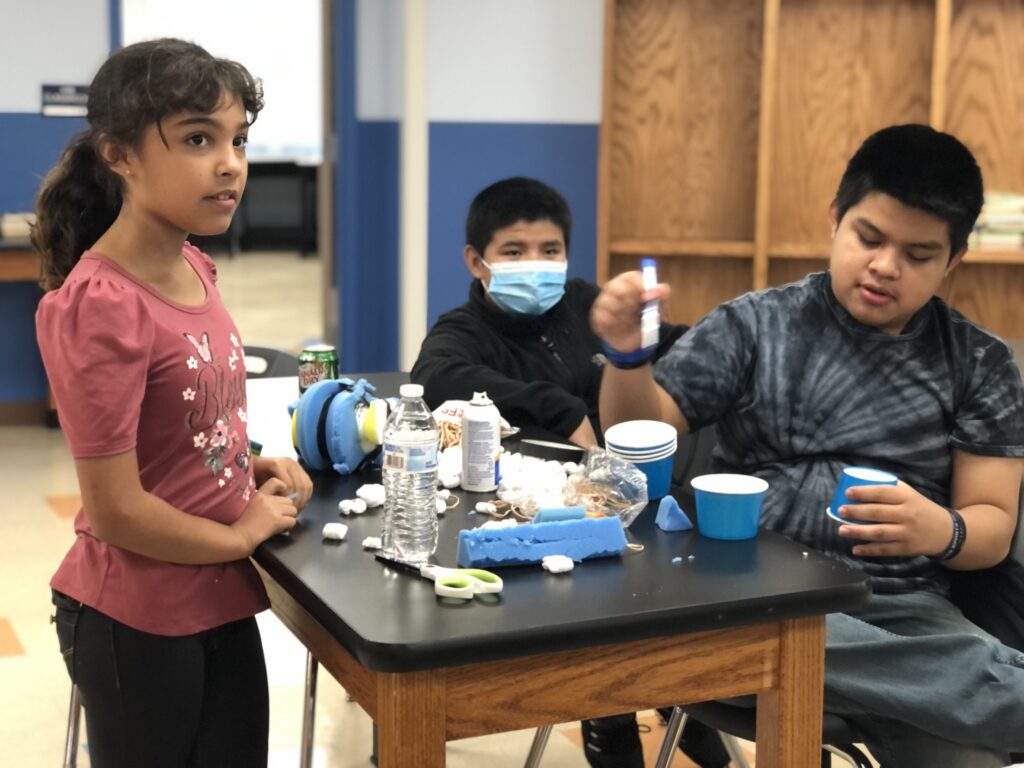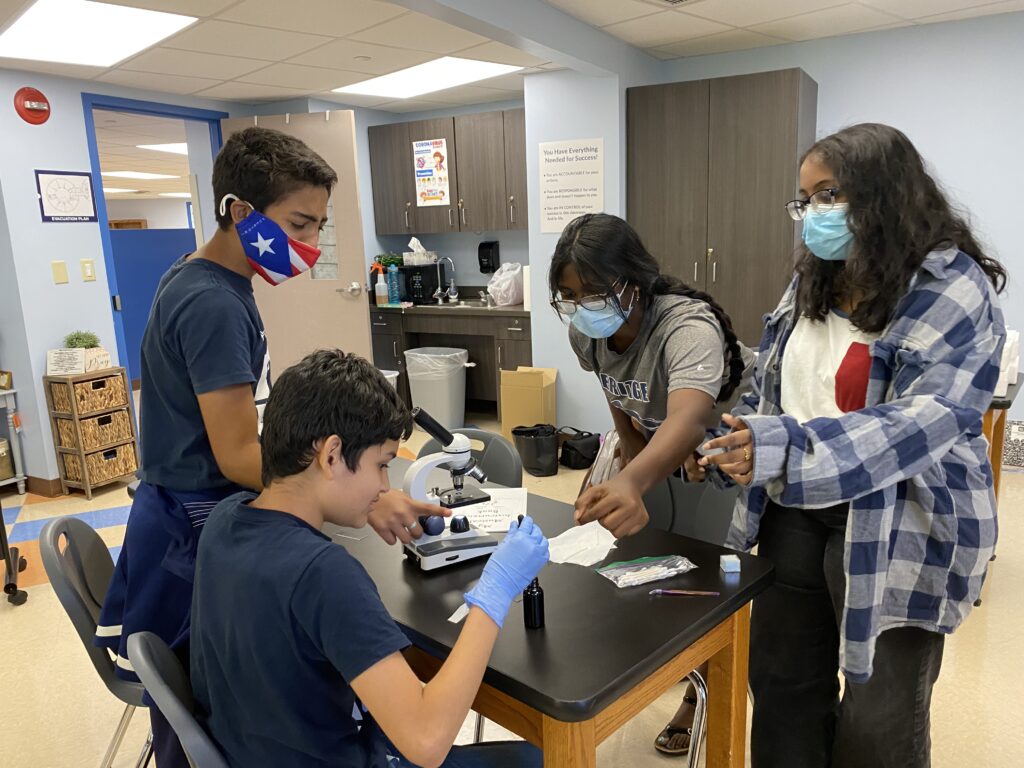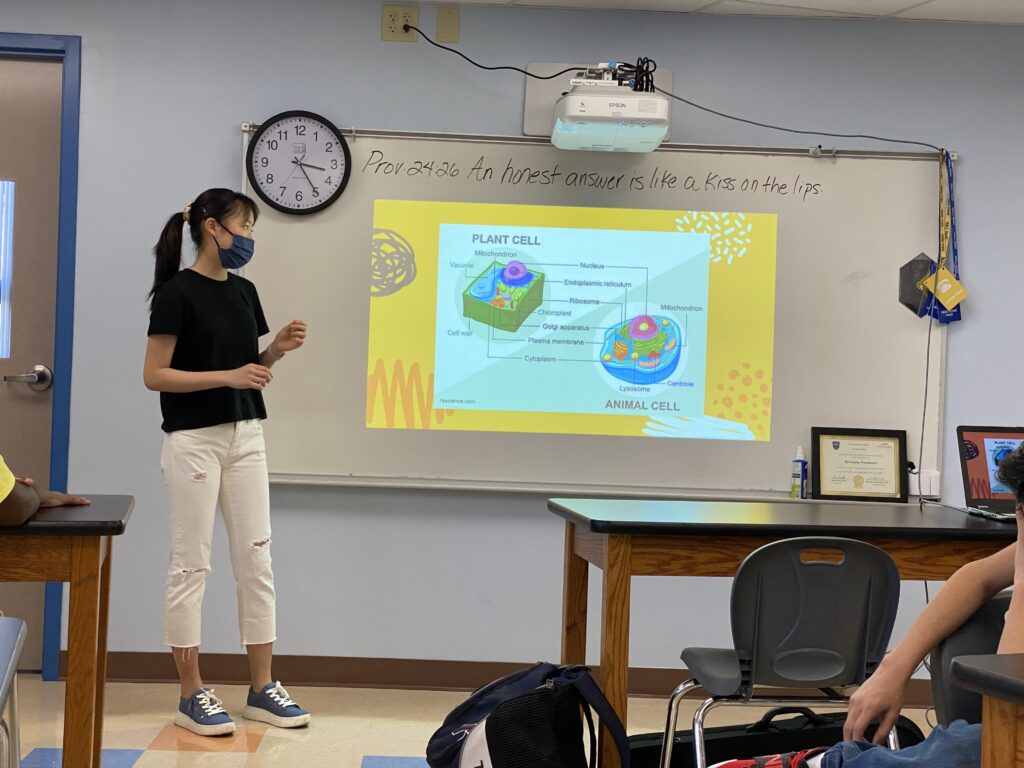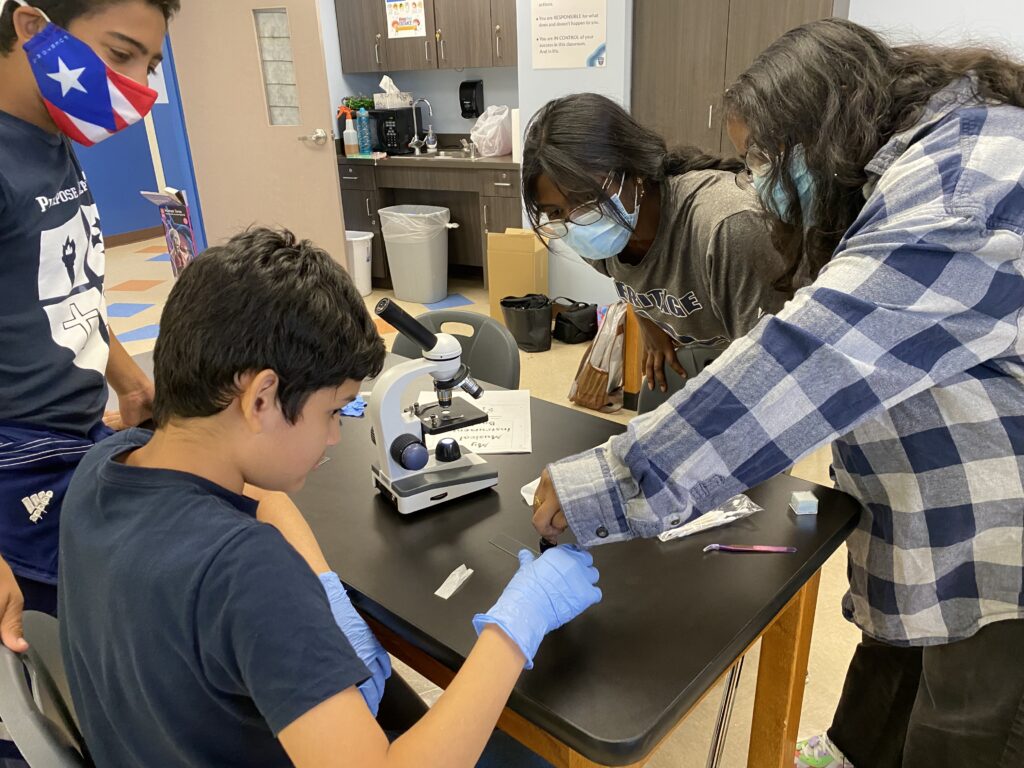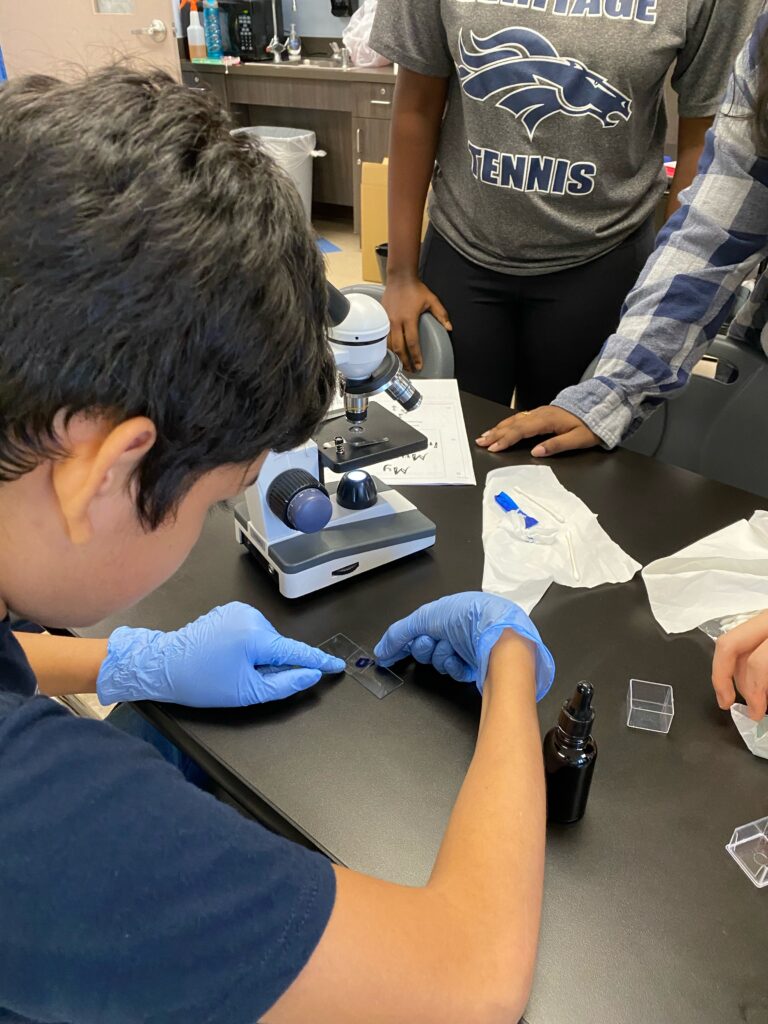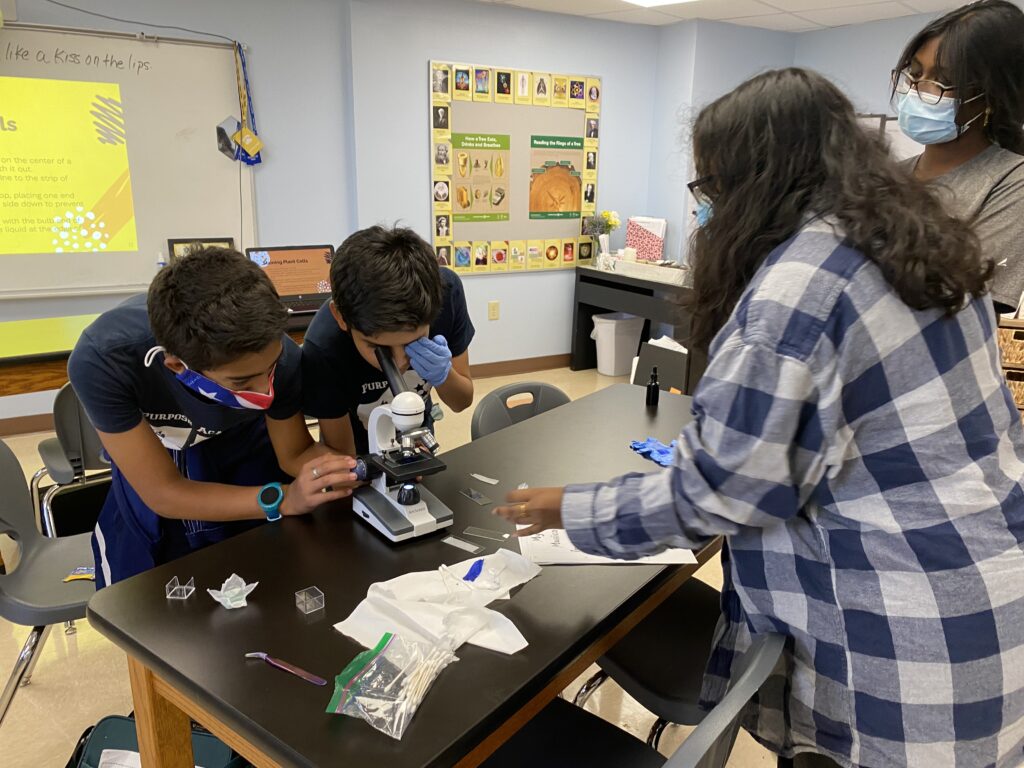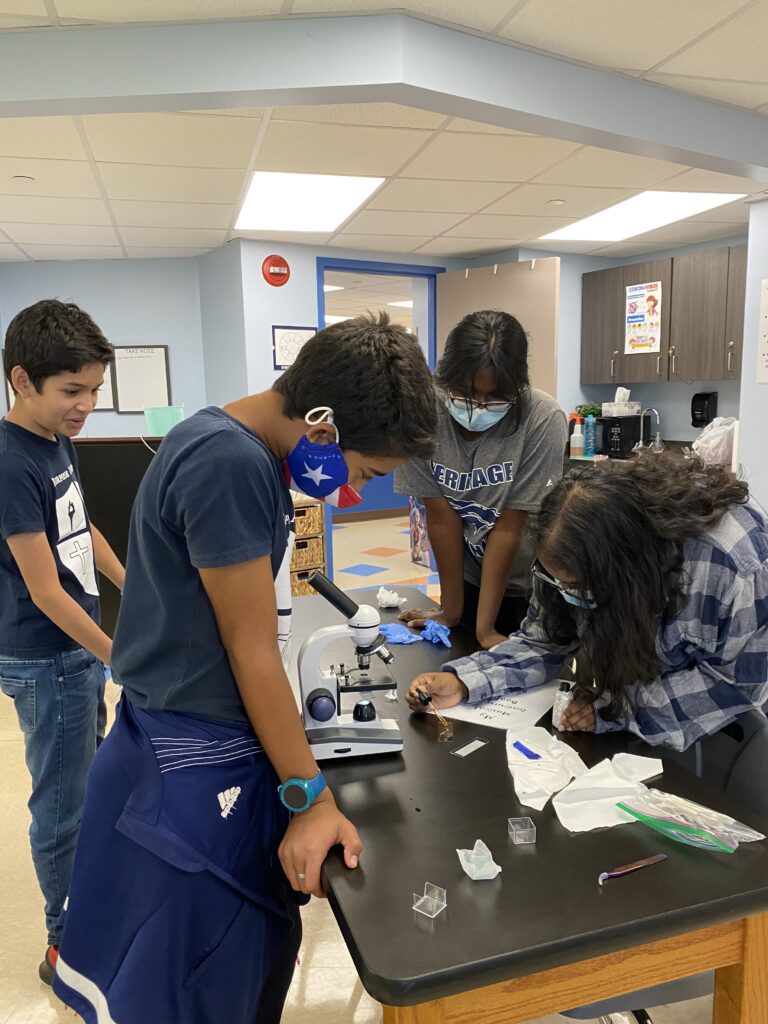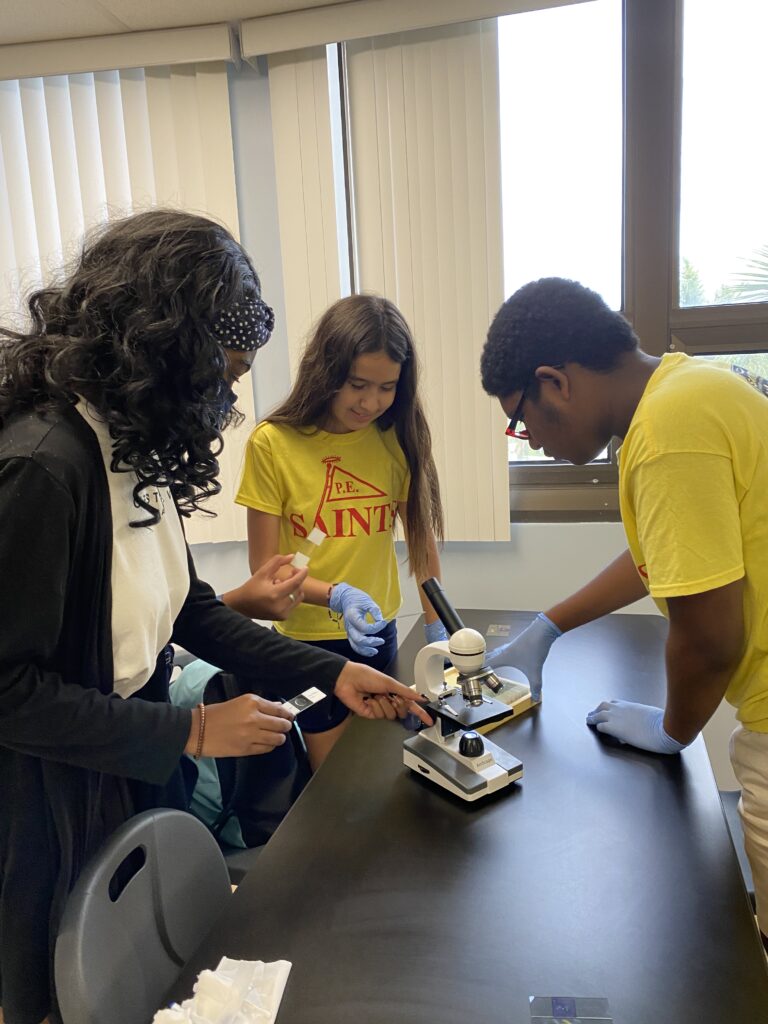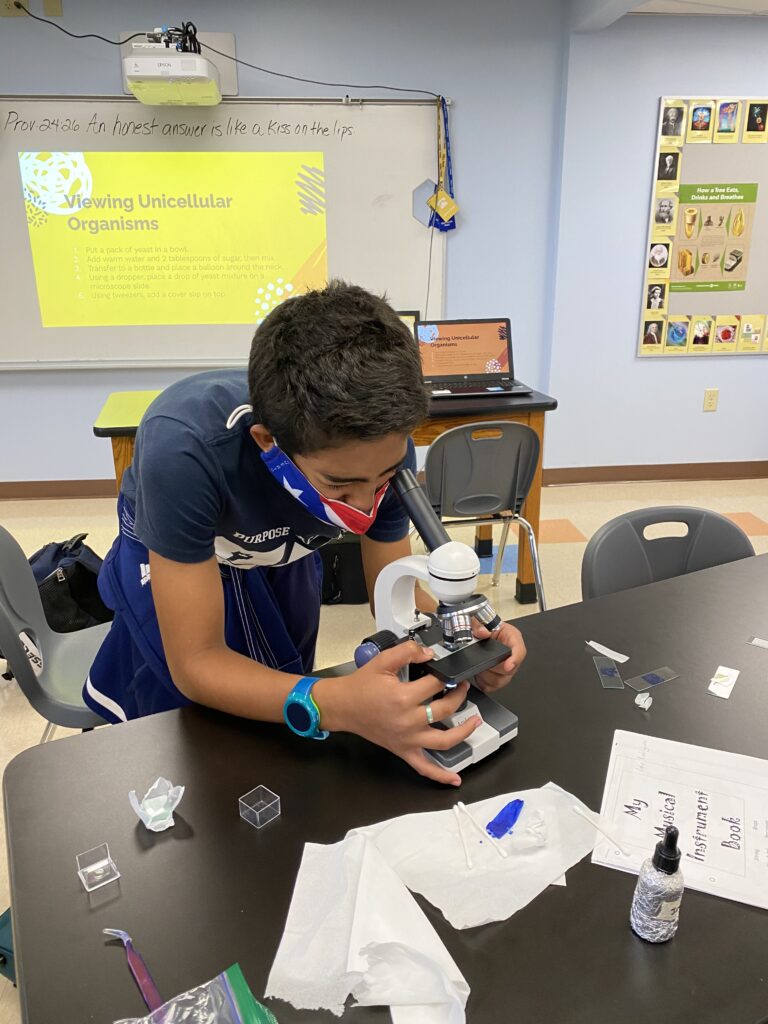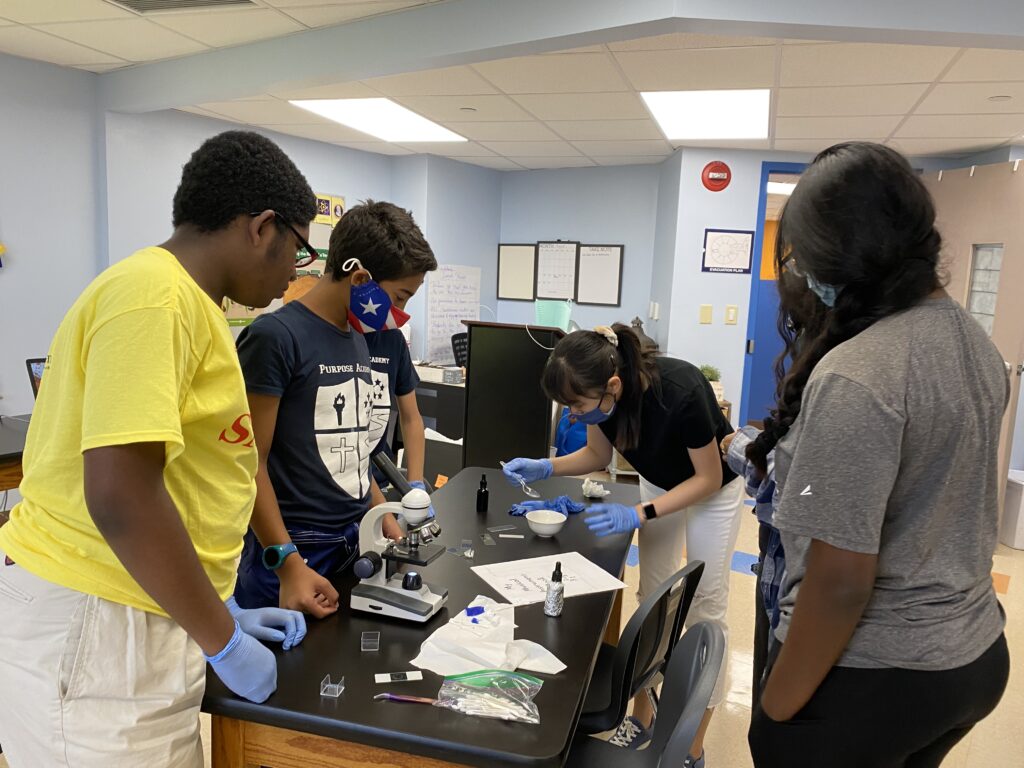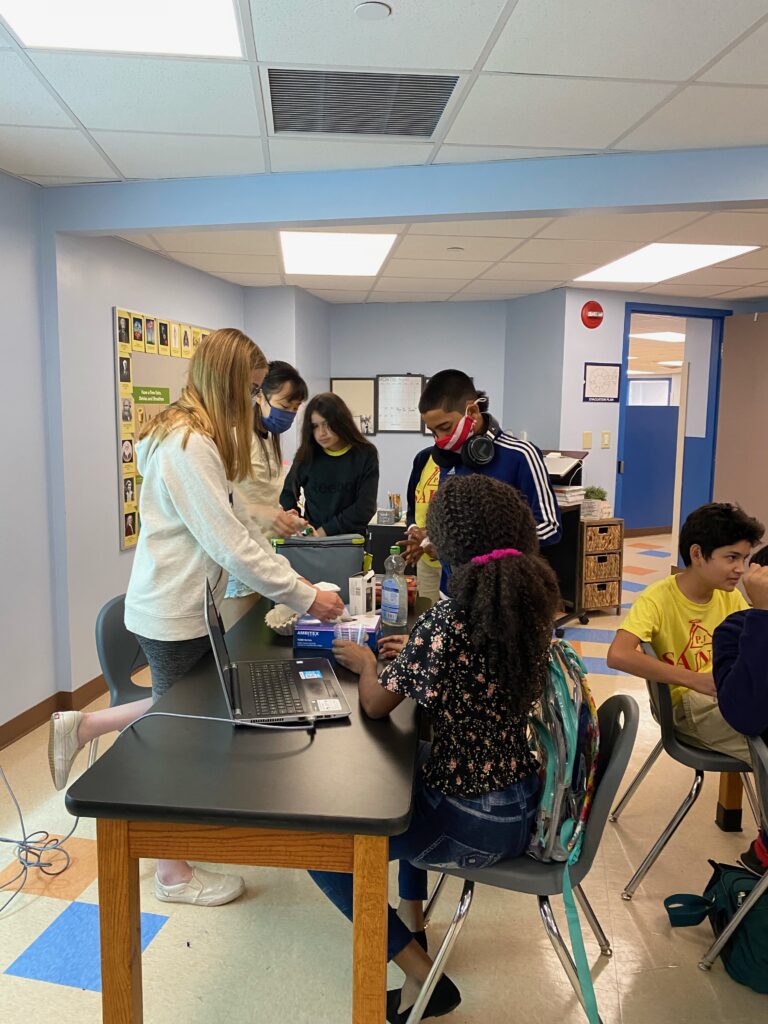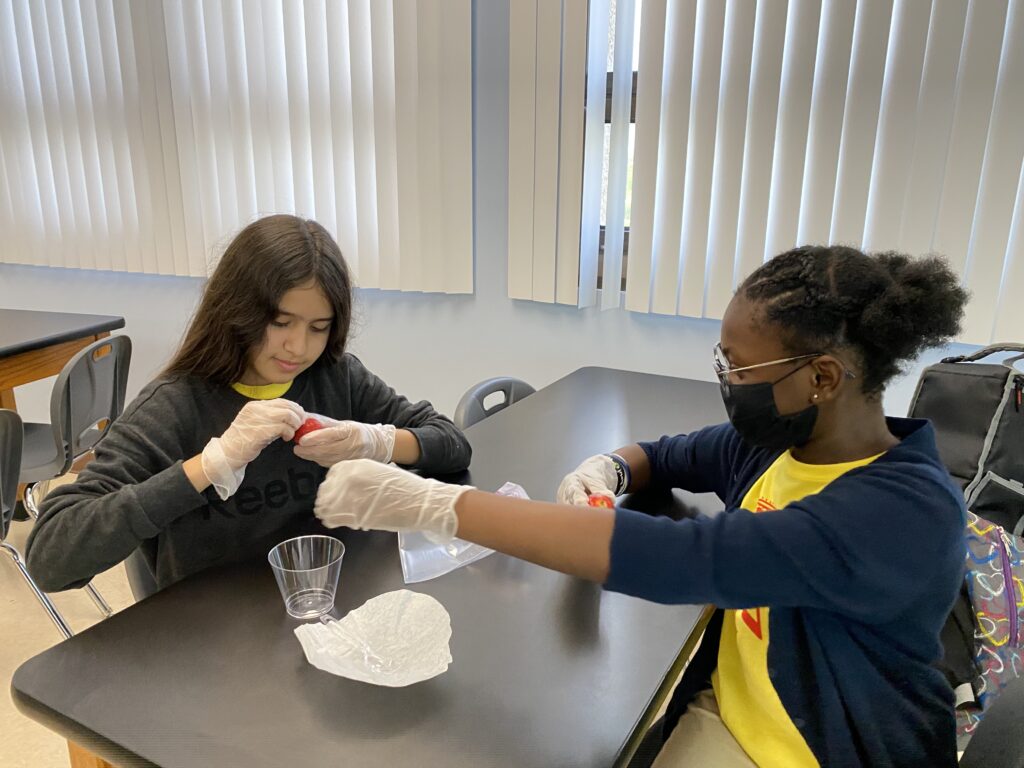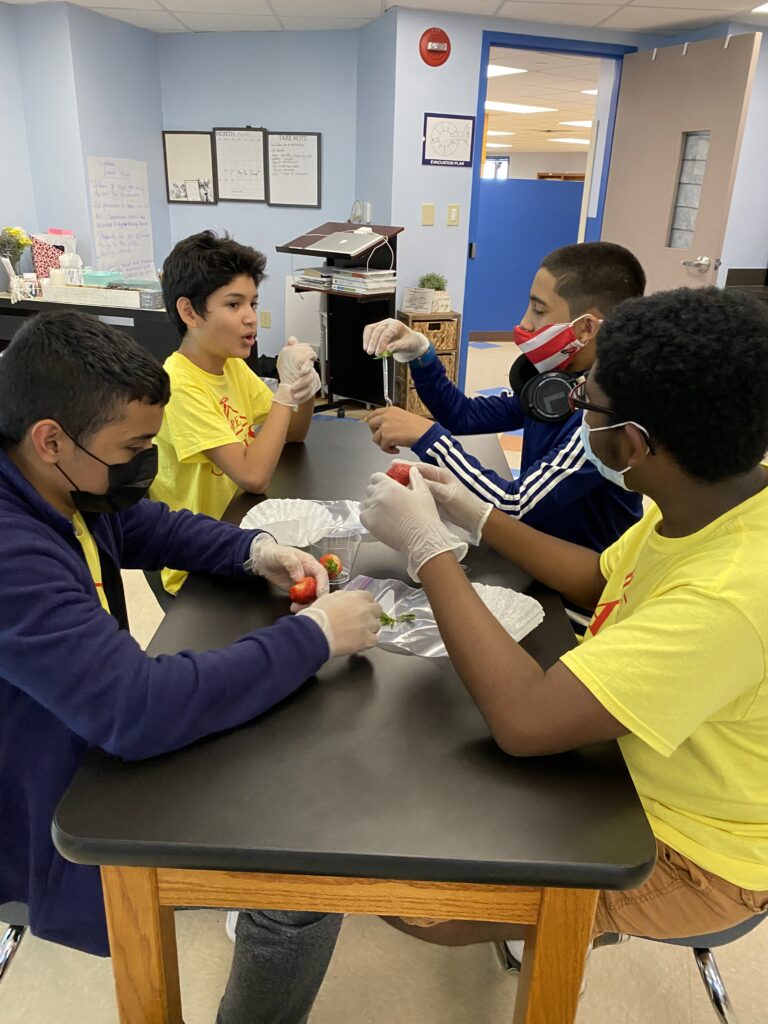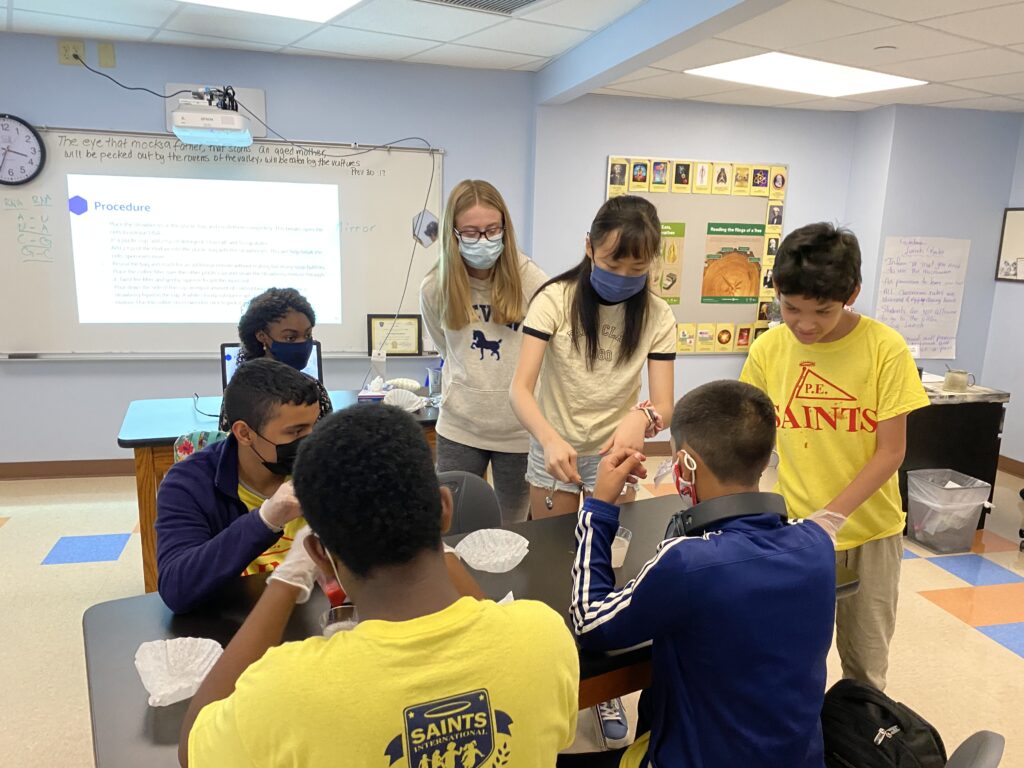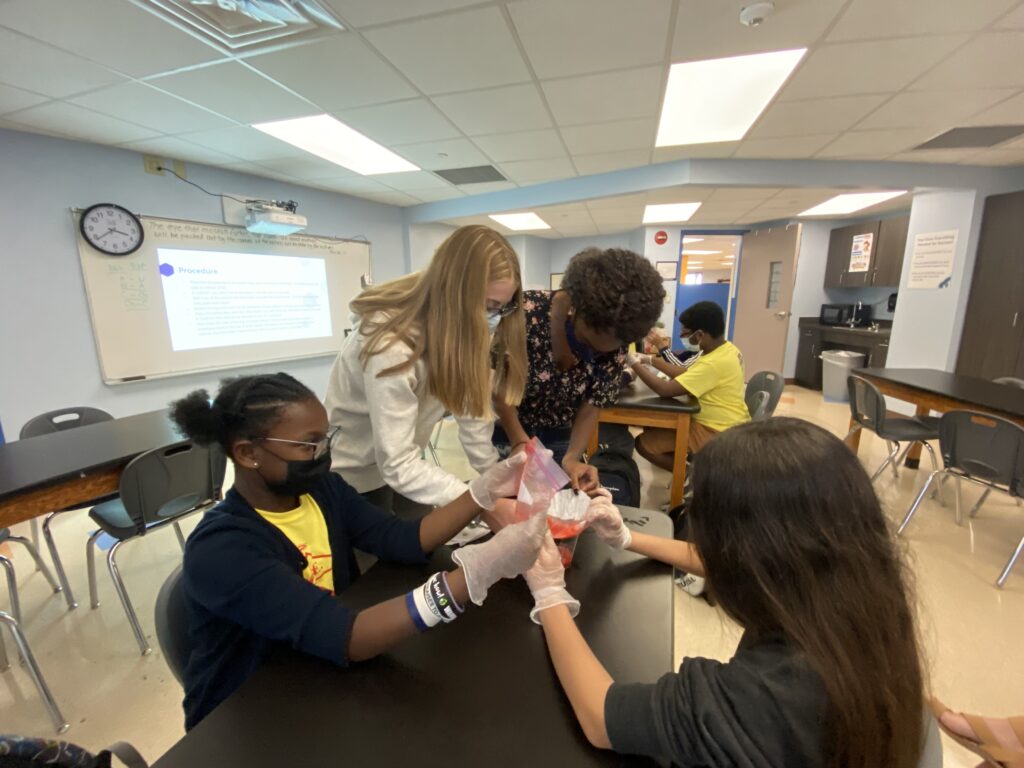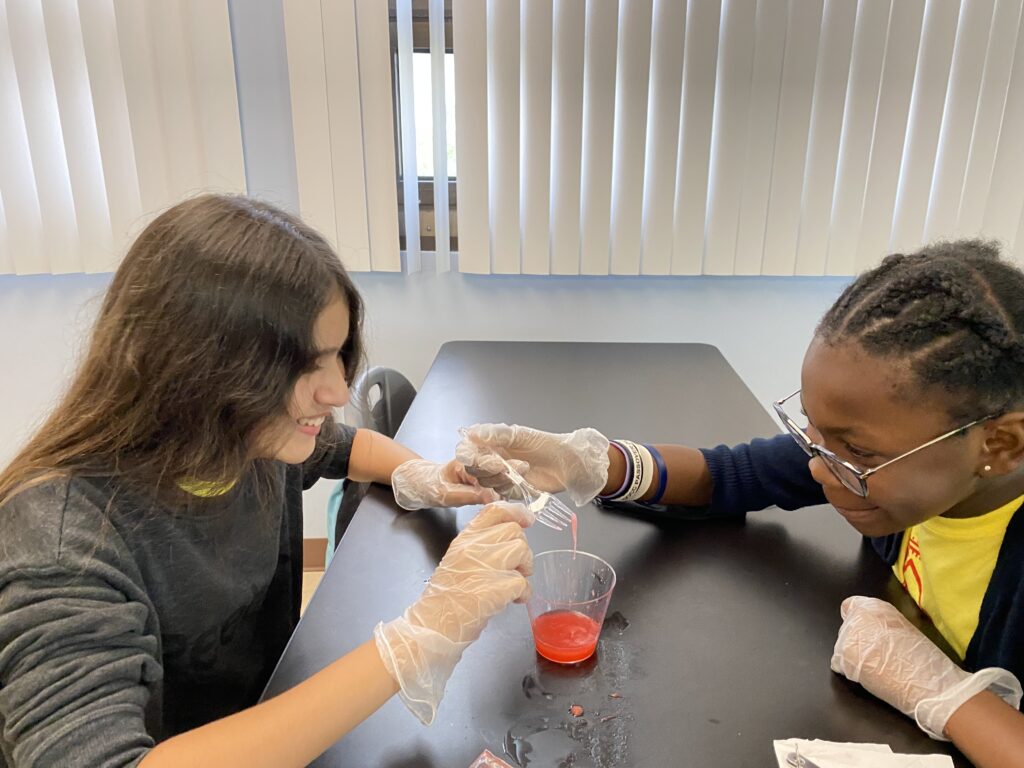Hands-on Science
On July 5th, 2021, Angelina Ning and Esmeralda Camille started a hands-on-science summer class for Purpose Academy students. In this class, students will be doing fun, informative science experiments each week to not only learn about scientific concepts but also to apply them. By getting involved in hands-on experiments, students will be able to watch spectacular chemical reactions occur right before their eyes, examine samples at the microscopic level, and view other cool scientific phenomena while understanding the principles behind them.
In the first class, students learned about some basic chemistry concepts, such as atoms, molecules, and chemical reactions. They learned about how chemical reactions can produce gases and how catalysts facilitate chemical reactions through the elephant toothpaste experiment, in which hydrogen peroxide decomposes into water and oxygen, a process assisted by the catalyst yeast. Students also painted their own paper maché volcanos and learned about how chemical reactions can absorb heat from their environment by observing the temperature difference before and after adding baking soda to vinegar.
In the second class, students finished up last week’s volcano eruptions by combining vinegar and baking soda. They then learned about some basic electricity concepts, including insulators and conductors, series and parallel circuits, resistors, and static electricity. To apply their knowledge about circuits, students assembled their own series and parallel circuits to turn on light bulbs, spin fans, play music, and much more. The students also applied their knowledge about static electricity to separate salt from pepper using charged balloon surfaces.
In the third class, students learned about how various physics concepts play a role in the egg drop. They then learned about how to manipulate the variables of impact force and time to reduce the chances of egg shell fracturing based on the concept of impact. Students were given the opportunity to build their own egg drop devices using a variety of materials and tested the viability of their devices at the end of class.
In the fourth class, students learned about multicellular and unicellular organisms, as well as the similarities and differences between animal and plant cells. They were then given the opportunity to prepare their own microscope slides swabbed with cheek cells, onion cells, and yeast cells. Afterwards, they learned how to use a compound light microscope to view the slides.
In the fifth class, students learned about the molecular structure of DNA and how the specificity of base pairing allows for DNA replication, transcription into RNA, and translation into proteins that give rise to living organisms. They then participated in an activity to extract DNA from strawberries.
